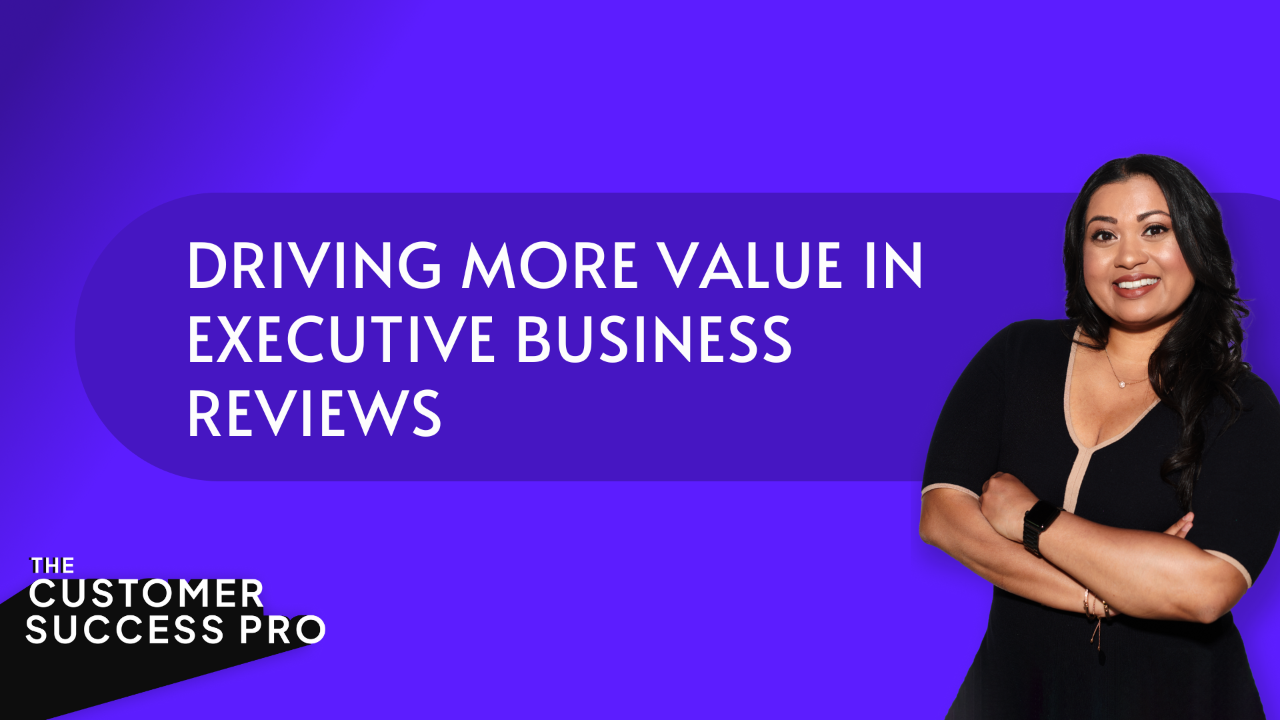
QBRs That Drive Growth, Not Just Reports
Nov 12, 2025Have you ever shut your laptop after a QBR and wondered if it actually changed anything? You shared usage, walked through slides, and maybe earned a polite nod from an executive. Yet nothing moved forward. If that sounds familiar, this episode is for you. In it, I unpack why so many Executive Business Reviews fall flat, what to stop doing, and a practical five step framework to turn your next review into a strategic business conversation that opens commercial doors.
Why Most QBRs Miss the Mark
Too many QBRs are built around the company delivering the software, not the customer buying it. We compile metrics, push a roadmap, and treat the session like a status update. That approach served a past era when heavy usage was a strong signal of value. In 2025, executives care about outcomes, not logins. They want to hear how your product protects or grows revenue, reduces risk, and increases efficiency. If your review does not connect to those three buckets, it is noise.
Another common mistake is talking at the customer instead of with them. Slide after slide, no dialogue, no challenge, no alignment. If an executive spends an hour in your review without speaking, you did not have an executive conversation. You delivered a lecture.
The third mistake is ending without a clear next step. You spend 60 minutes building momentum, then close with any questions and a thank you. That stalls the account. Reviews without a strategic call to action do not create progress, they create pause.
The Five Step EBR Framework
Here is the five step framework I coach teams to use to transform QBRs into business conversations.
Step 1, Strategic discovery before the meeting. Meet your champion several weeks ahead and ask three things. What do your execs care about right now. What is on their business roadmap. What keeps them up at night. Then ask, what win should I spotlight to make you look great in front of your boss. This turns the review into a co created session and gives you the signal map for your story.
Step 2, Build around business outcomes. Frame every section with the simple story arc, before, action, after. Before is the pain or goal that triggered purchase. Action is the feature or workflow adopted. After is the measurable outcome the business achieved. Do not stop at feature adoption. Finish the story with a quantified result.
Step 3, Map product impact to executive priorities. Speak the executive language, revenue, risk, efficiency. Revenue, how did the product increase pipeline, conversion, retention, or expansion. Risk, how did it reduce exposure in security, compliance, or operational failure. Efficiency, how did it save hours, streamline a process, or remove cost. Tag each value story to one of these three themes so leaders can quickly connect dots to their goals.
Step 4, Spotlight customer wins, not only metrics. Recognize the champion and team members by name and show how their choices produced the outcomes you reported. Leaders love seeing their people credited. This builds trust and deepens your partnership.
Step 5, End with a commercial call to action. Reserve at least 10 minutes for next step decisions. Examples. Reconfirm goals for the next two quarters and align on success metrics. Invite a regional leader to explore a wider rollout. If budget expands next quarter, shortlist the two use cases that would deliver the fastest impact. You are not pushing a deal, you are guiding the next stage of the partnership.
From Reporting Session to Boardroom Session
One of the most powerful reviews I have seen replaced the usual slide parade with a boardroom session. The account was multi million in value, usage had dipped, sentiment was shaky, and a renewal was at risk. The team skipped product slides and reframed the meeting around the customer’s expansion into new markets, churn reduction, and how the platform could support both. Three strategic outcomes were aligned by the end of the call, and the customer asked about expanding usage. That shift happened because the conversation moved from product status to business impact.
If you want to replicate that shift, try this quick play:
-
Rename the meeting Executive Strategy Review. You are sending a signal that this is a business discussion.
-
Open with a one page brief. Customer goals, current outcomes tied to revenue, risk, efficiency, and the three decisions to make together today.
-
Use the before action after story for each value proof. One story per decision is enough.
-
Time box slides, then switch to questions at the midpoint. If leaders are speaking, you are winning.
-
Close with a written decision recap and owners. Send the summary within two hours to lock momentum.
Key Takeaways
• Usage is not value. Executives care about revenue impact, risk reduction, and efficiency gains.
• Conversation beats presentation. Invite challenge, questions, and alignment.
• Tell complete value stories. Before, action, after, always end with the outcome.
• Celebrate people, not only numbers. Spotlight the champion’s win in front of their boss.
• Always close with a clear CTA. Goal refresh, expansion path, or stakeholder alignment.
Listener challenge. Pick one upcoming customer meeting and reframe it using this structure. Executive priorities first. Before action after stories. A clear commercial call to action. You do not need perfect dashboards. You need alignment. Share how it goes and tag me so I can cheer you on.
🎧 Listen on your favorite platform:
🔹 YouTube
🔹 Spotify
